Lean and Six Sigma
Lean manufacturing
The key principle of Lean manufacturing is moving towards the elimination of all waste to develop a faster, more dependable operation that operates at a low cost and produces higher quality products and services. (Slack et al., 2007) Throughout these articles, we'll refer also to established literature, which you are welcome to look up. We update our sources on an ongoing basis.
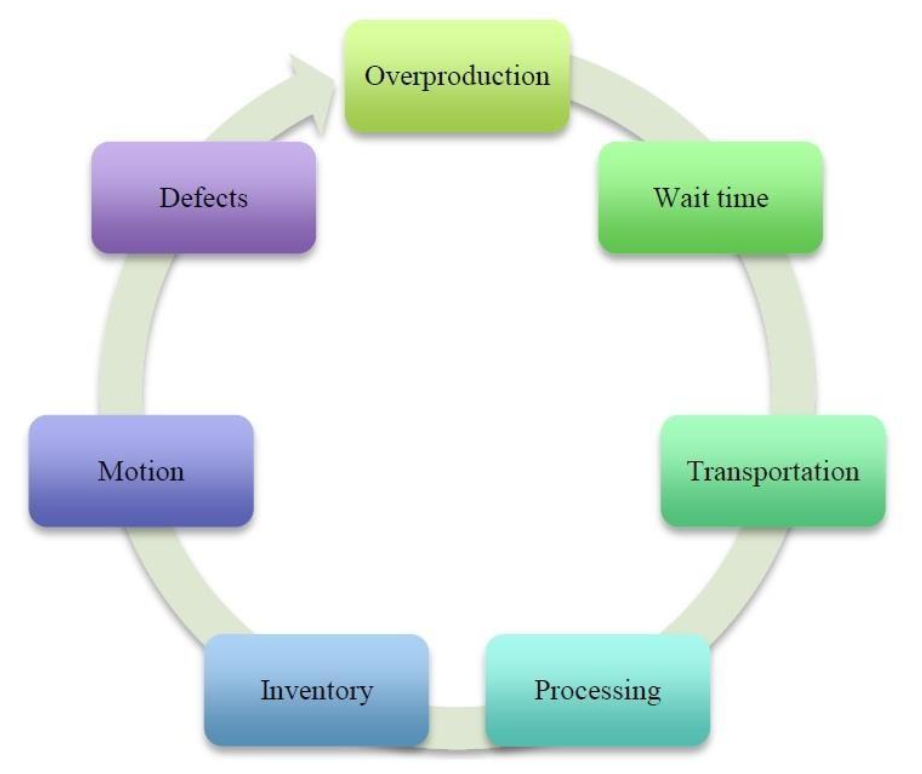
The main idea of lean manufacturing is the elimination of waste from the value stream. It is a philosophy dependent on constant improvement and the involvement of all the employees within the company.(Zamira & Maria del Carmen, 2012) Here we show the seven types of waste which Lean manufacturing drives to eliminate. "Waste" is an activity which doesn’t add value. (Slack et al., 2007) Decreasing waste increases the speed and flow of the production system. Value Stream Mapping can be a great tool to reduce waste, you can read more about it in our Time and Motion study paper.
Lean manufacturing versus traditional US production system
Traditional US production system is based on the concept of batch and queue. The techniques are developed on the principles from economies of scale, which assumes that small batch sizes are uneconomical due to the penalties of setup and changeover. (Edward & Maleyeff, 2005) In contrast Lean puts emphasis on small batch sizes and eventually on single piece flow. The concept of pull is an essential part of Lean as it implies make-to-order (MTO) approach, meaning nothing is made until it is needed. (Edward & Maleyeff, 2005)
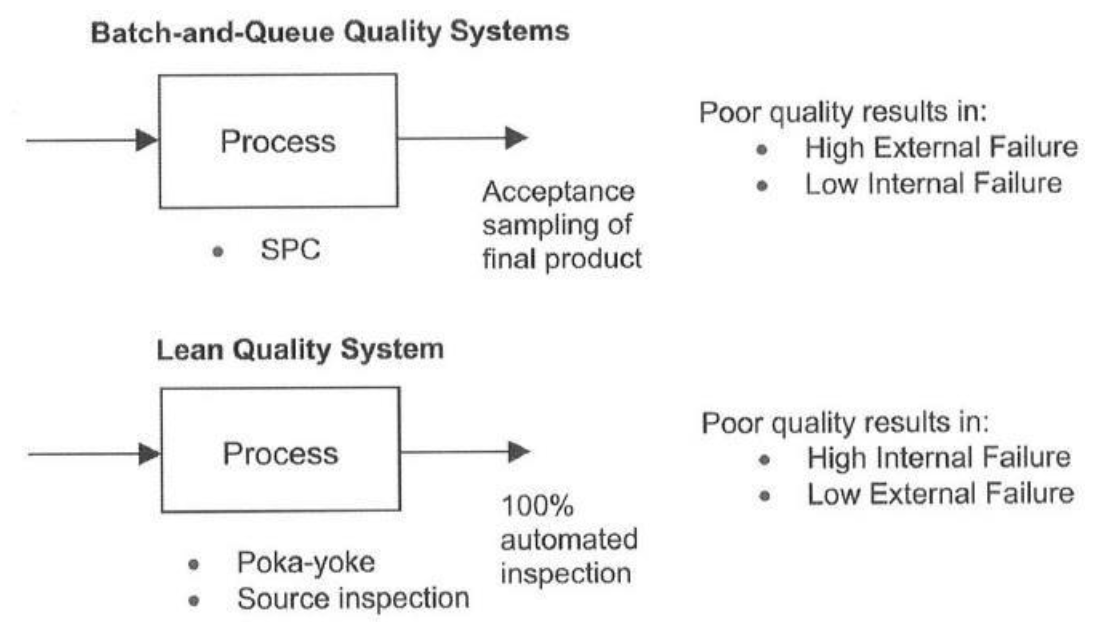
This illustration highlights the main differences in quality of the Traditional and Lean approach. In the Traditional approach quality is checked by inspectors, audits and statistical process control (SPC). Therefore, poor quality for equivalent process quality levels in the Traditional approach result in high external failure costs and low internal failure, whereas it would be vice versa in the Lean approach. (Edward & Maleyeff, 2005)
Six Sigma (6σ)
Six Sigma, is a statistics driven approach to quality control, this is done by minimizing variability throughout the process.(Window&Door, 2013 and Slack et al., 2007) This definition brings out only the basic meaning behind Six Sigma. Six Sigma today is not only a narrowly focused quality management system, but rather a broad long term decision making strategy. (Edward & Maleyeff, 2005)
Levels of Six Sigma
According to Motorola, (n.d) Six Sigma can be dismantled into three key aspects:
Metric – 3.4 defects per one million opportunities (DPMO);
Methodology – business improvement methodology focusing on different aspects of an organization;
Management system – high performance system for executing business strategy.
Metrics
Metrics, it is a system comprised of related measurements that facilitates the quantification of a specified characteristic.(Miller, 1980) According to Motorola the specification range of a part (either of a product or a service) has to be ±6 the standard deviation of the process. This figure demonstrates the decrease of DPMO in accordance to the progressive narrowing of the process variation. (Slack et al., 2007)
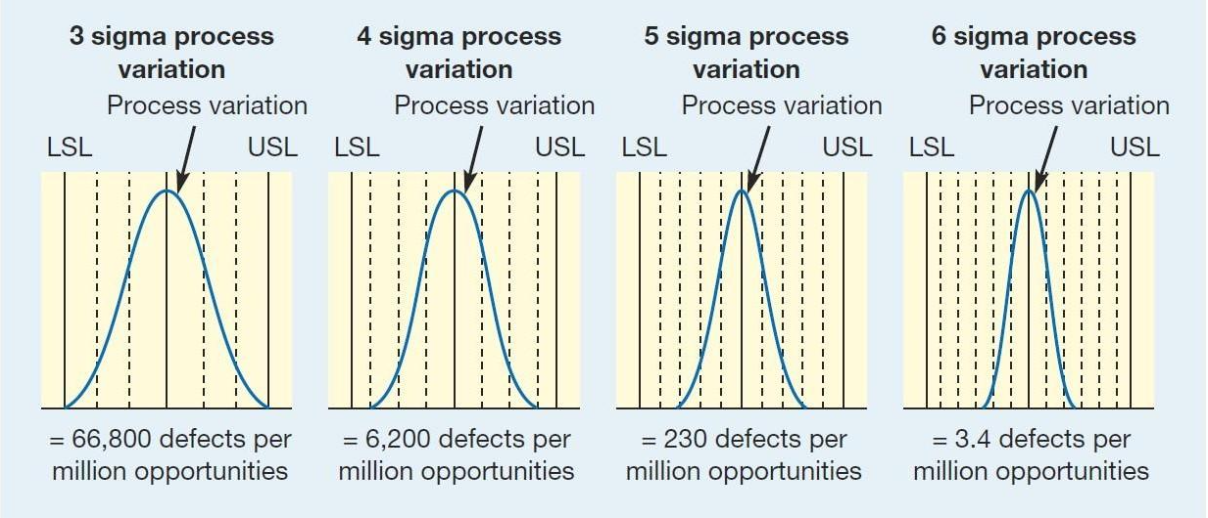
Methodology and Management system
Today Six Sigma is a combination of statistical metric and Total Quality Management (TQM). They don’t imply though that all aspects of TQM are taken over. The main points that Six Sigma has taken over are:
Customer focus;
Quality is the responsibility of all employees;
Emphasis on employee training. (Edward & Maleyeff, 2005)
Lean Six Sigma (LSS)
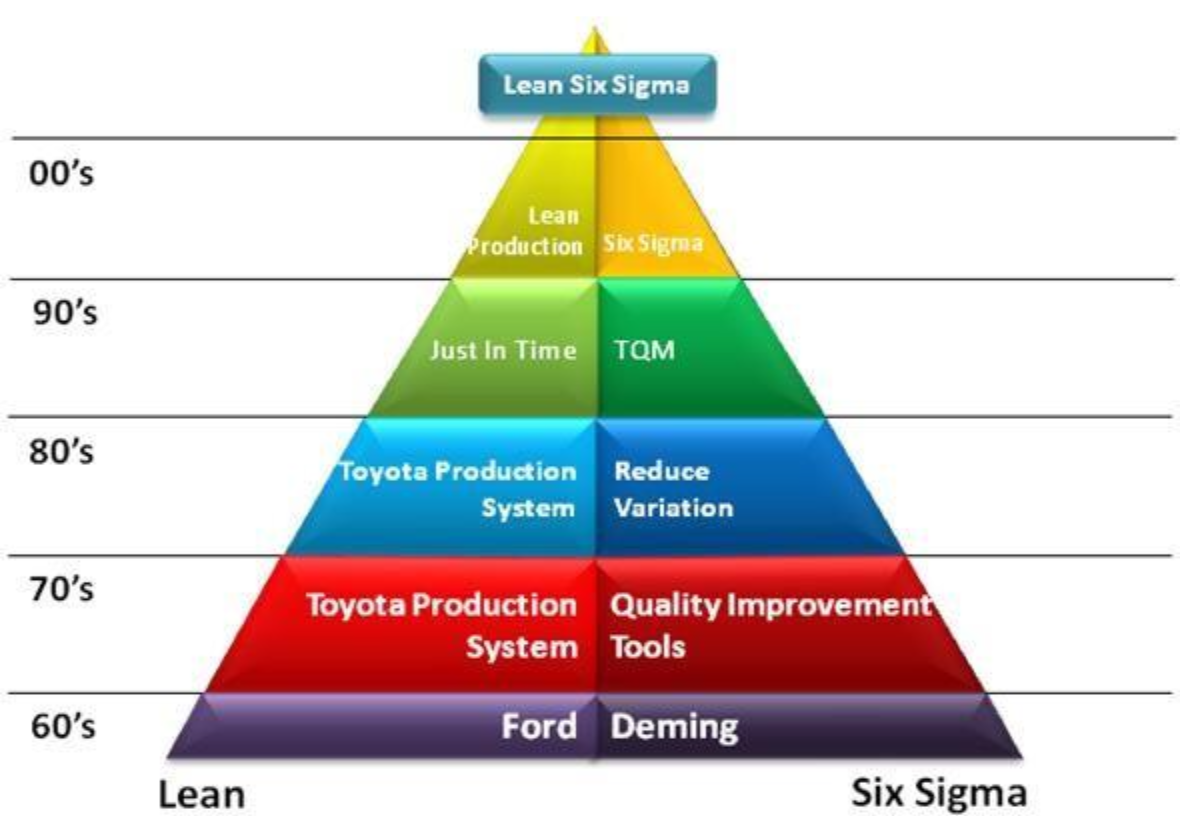
Lean Six Sigma (LSS) is a methodology and a strategy that enhances process performance resulting in higher customer satisfaction and better bottom line results.(Snee, 2010) LSS is composed of two different concepts by integrating the best of both: Lean manufacturing and Six Sigma (6σ).(Sheridan, 2000) Figure 2.6 illustrates the evolution of the merger of the two systems.
Integration
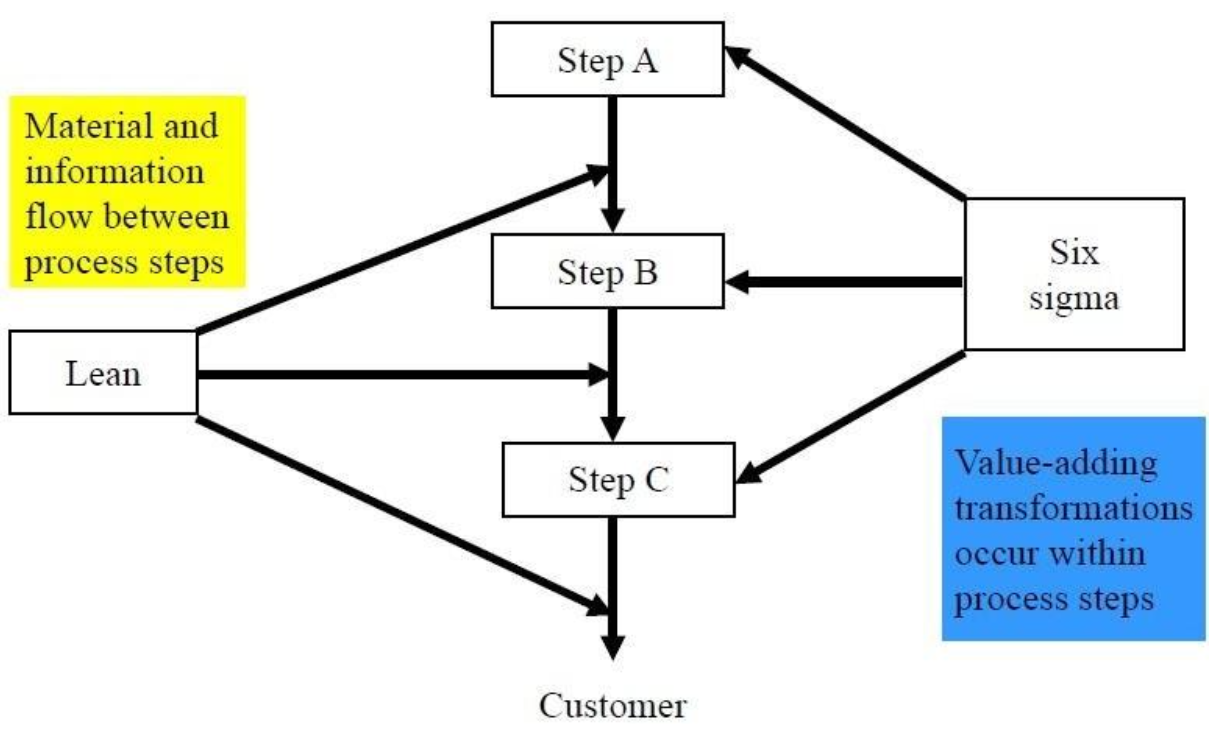
The idea behind integrating Lean and Six Sigma is that they would complement each other. Lean detects value adding and non-value adding steps in a value stream, and makes the flow of a process more effective. Six Sigma on the other hand solves the problems within the value adding processes. The integration of Lean and Six Sigma is shown in Figure 2.7.(Snee, 2010) This is also the reason Six Sigma was added to this literature review. Six Sigma is mostly a statistical method that nowadays has also parts of TQM integrated, it is a good way to show the relationship this research is hoping to achieve between CoQ (numerical TQM tool) and VSM (a Lean tool).
Why the sum of the parts is greater than the whole
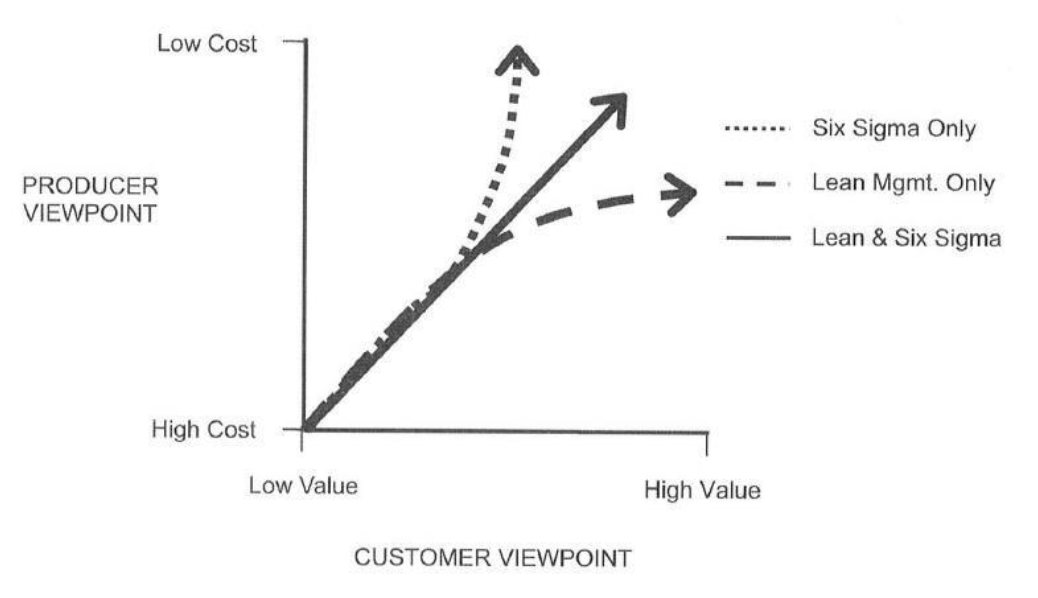
Companies that practice only one of the aforementioned have a chance of reaching a point of diminishing returns. Figure 2.8 illustrates the diminishing effects of both Six Sigma and Lean manufacturing; it also brings out the effect of integrating the two in the form of LSS. As seen, as time passes, the value gained through Six Sigma alone diminishes. If only using Lean manufacturing, the rate of decrease in costs diminishes. The aforementioned problems are surpassed by LSS. (Edward & Maleyeff, 2005)
Flowbase can help with several steps within implementing LSS in your organization. At Flowbase we have automated time and motion study (VSM) annotation, data collection and analysis. Flowbase uses computer vision and AI to automatically analyse any video footage that you upload, enabling you to easily analyse multiple material flows in parallel. All resulting data is gathered to a single dashboard and searchable indexed reports – and if you’re keen to see why the timeline looks the way it does in a particular place, then you can easily refer back to the original video footage. Now, if your production manager wants to compare benchmarks, then it’s a click away. All data is visualised automatically in an easily understandable manner, with historical data and improvements (or regressions) available for each process. If you need to drill down into more detail, then detailed by-the-second data is available in detailed process reports.